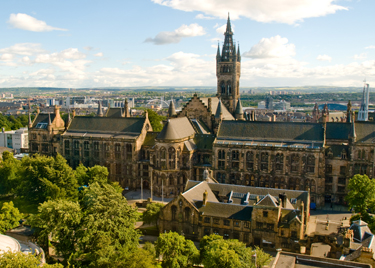Two Glasgow projects shortlisted for THE awards
Published: 6 September 2013
Two projects at the University of Glasgow have been shortlisted for prestigious Times Higher Education Awards 2013.
Two projects at the University of Glasgow have been shortlisted for prestigious Times Higher Education Awards 2013.
A study by Professor Scott Nelson which led to the development of the world’s first calculator that predicts a couple’s chances of success of conceiving through in vitro fertilisation (IVF) is nominated in the Outstanding Research Project of the Year category.
Also in contention for a prize is the Hunterian Associates Programme which is nominated in the Outstanding Support for Early Career Researchers category.
The winners will be announced at a ceremony in the Grosvenor House Hotel in London on 28 November. The full shortlist can be found at http://www.the-awards.co.uk/the2013/shortlist
Since the advent of IVF in 1978, over five million babies worldwide have been born to couples with fertility problems.
However, while IVF offers hope and opportunity to many, treatment is demanding, both emotionally and physically and can present life-threatening complications. The NHS warns that only about one quarter of IVF treatment cycles results in a live birth and the single biggest risk is that of multiple pregnancies, which carry an increased incidence of miscarriage, premature birth, and perinatal mortality. Depression and anxiety during and after lengthy IVF treatment are commonly experienced by couples.
Previously, the primary consideration in assessing IVF outcome was age however a number of couple-specific factors contribute to the success or failure of the treatment. Pioneering research by Professor Scott Nelson, University of Glasgow, and Professor Debbie Lawlor of the University of Bristol, developed a highly accurate prediction model for live birth outcome following IVF.
This study, published in PLoS Medicine in 2011, performed a prospective analysis of data collected on more than 124,000 IVF treatment cycles and outcomes during 2003-2007. This innovative model incorporated current clinical techniques, data on use of donor eggs, IVF cycle number and previous successful live birth history with improved calibration and accuracy.
In collaboration with Dr Tom Kelsey, University of St Andrews, Prof Nelson produced a freely available online calculator version of the prediction model – ‘IVFpredict’ – which allows couples to predict their chances of a successful live birth.
 The online tool was launched in 2011 to substantial press coverage in the UK and abroad and an ‘app’ was released in 2012. Importantly, IVFpredict was the model chosen by the National Institute for Health and Care Excellence to develop best practice in reformed fertility guidelines in February 2013.
The online tool was launched in 2011 to substantial press coverage in the UK and abroad and an ‘app’ was released in 2012. Importantly, IVFpredict was the model chosen by the National Institute for Health and Care Excellence to develop best practice in reformed fertility guidelines in February 2013.
IVFpredict has transformed the decision-making process for people considering infertility treatment. By providing a ‘personalised’ prediction of IVF success based on a range of factors input by the user, IVFpredict expands the information available to make a decision and effectively manages patient expectations, reducing the emotional risks in cases where success probability is low and increasing the availability of accurate, personalised information and support for patients
IVFpredict’s accuracy rate is 99% and use of the tool has skyrocketed: since launch, six million people have used the calculator to predict their personalised IVF outcome.
The Hunterian Associates Programme (HAP) provides an innovative model for postgraduate researchers to share their knowledge through meaningful public engagement and connect their research to the world-leading collections of the Hunterian Museum and Gallery.
As Scotland’s oldest public museum, the university previously had no formal activity linking itself to the hundreds of graduate researchers on its doorstep. At its core is the recognition that the cutting edge research carried out by our students connects in exciting an unexpected ways with the university’s extensive collections.
HAP invites students to use their research and advanced research methods to offer new interpretations of the collection and propose creative ways to disseminate new knowledge.
In HAP’s first year, eight students took part in five unique and inventive projects. The subject matter was wide ranging: Japanese-influenced art; the poem prints of Ian Hamilton Finlay; Paisley shawls; Hunter’s book collection and artifacts from the Ethnography collection. A structured training programme included mentoring by specialist curators as well as sessions on writing for the web and How to deliver research with impact.
The project is now core-funded, welcoming 13 new associates from across the University. The project has real benefits to the Associates and the Hunterian.
Find out more
For more information contact Stuart Forsyth in the University of Glasgow Media Relations Office on 0141 330 4831 or email stuart.forsyth@glasgow.ac.uk
First published: 6 September 2013
<< September

